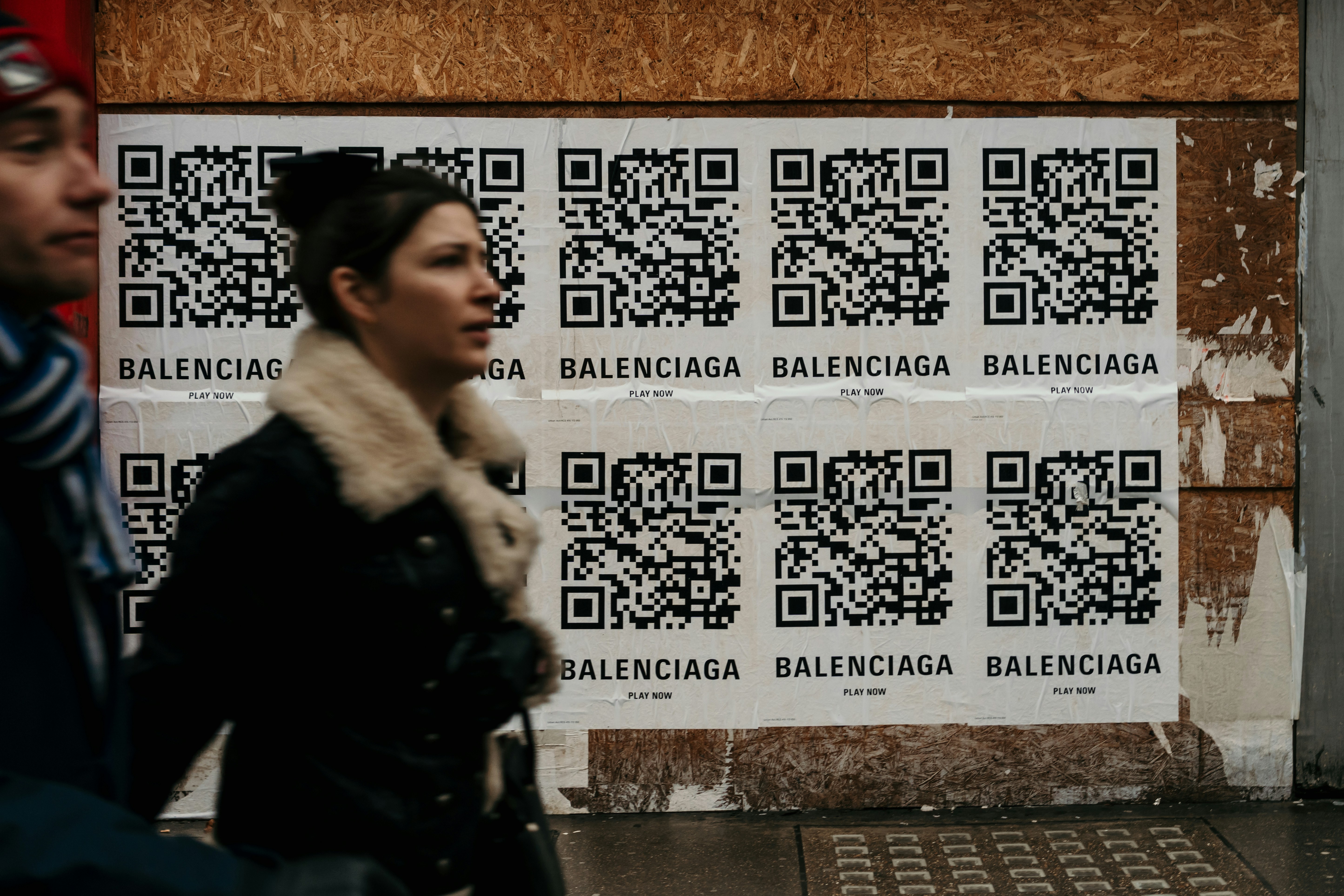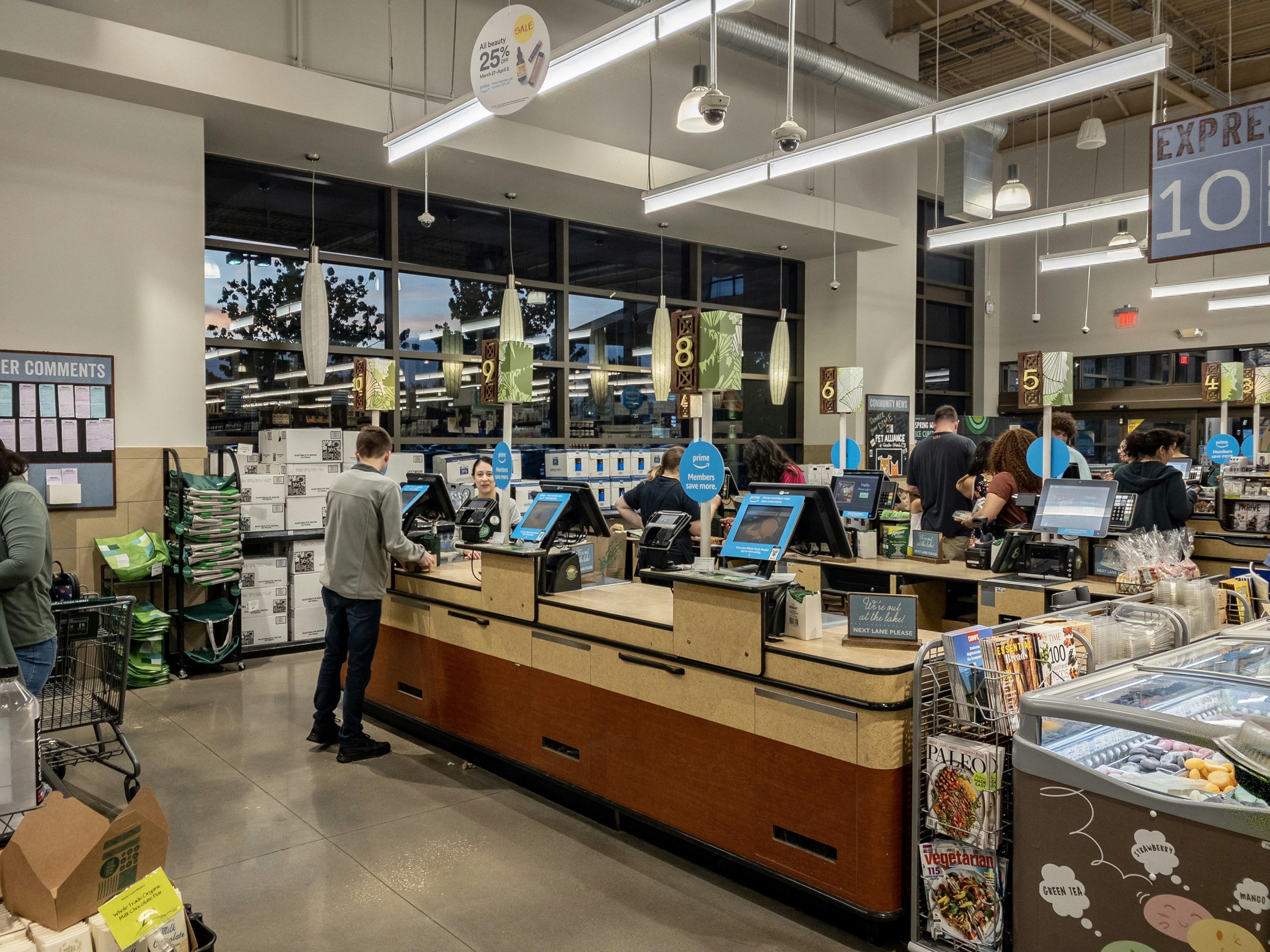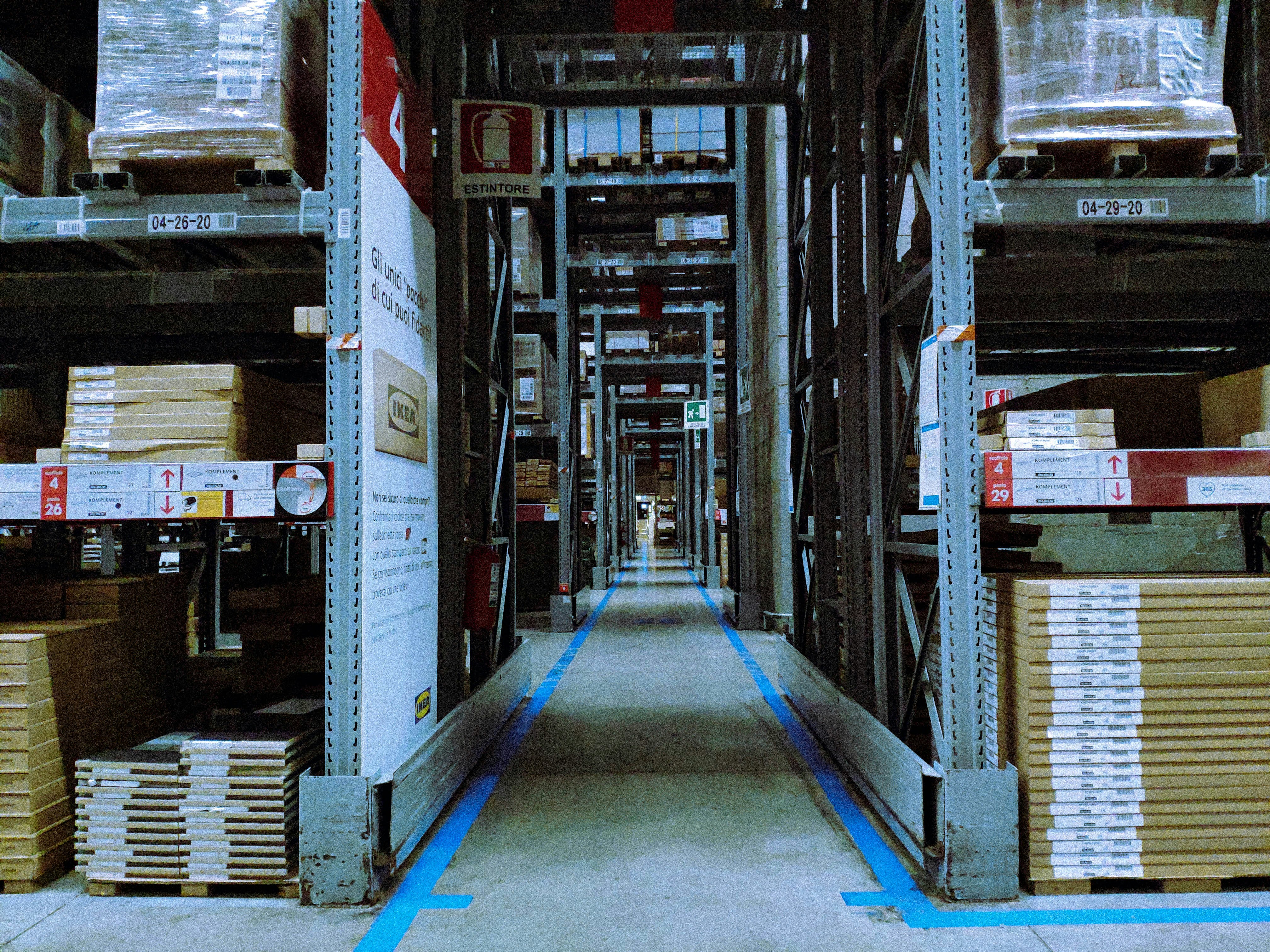Introduction to QR Codes
QR codes, short for Quick Response codes, are two-dimensional barcodes that can store a wide range of information. Originally developed in 1994 by a Japanese company called Denso Wave for tracking automotive parts, the technology has since evolved and found its applications across various sectors, including fashion retail, marketing, and logistics. The versatility of QR codes stems from their ability to be scanned using commonly available smartphone cameras, making information retrieval instantaneous and user-friendly.
As digital engagement continues to shape consumer behavior, QR codes have witnessed a remarkable surge in popularity. They are increasingly recognized as effective tools that bridge the gap between digital and physical interactions. This is particularly significant in the fashion retail industry, where brands strive to foster a seamless shopping experience. Customers can quickly access product details, promotional offers, or engage with social media channels just by scanning a QR code displayed on product packaging, advertisements, or in-store signage.
This growing prevalence of QR codes in fashion retail points to their potential to enhance consumer interactions. In an era where digital transformation is paramount, QR codes serve as a practical solution to engage customers in a more dynamic manner. By facilitating direct access to content and eliminating barriers to information, they empower consumers to make well-informed decisions, thereby elevating the overall shopping experience. Furthermore, they provide retailers with valuable data insights, such as customer preferences and browsing behaviors, which can be leveraged to tailor marketing strategies effectively.
The Evolution of QR Codes in Fashion Retail
QR codes, or Quick Response codes, have experienced significant evolution since their inception in the early 1990s. Originally designed for tracking automotive parts, QR codes found a new life with the rise of smartphones and mobile applications. In the realm of fashion retail, the application of QR codes has transformed the shopping experience, bridging the gap between physical stores and digital engagement.
The adoption of QR codes in fashion began to gain momentum around the late 2000s. Early instances focused primarily on marketing campaigns, where brands would place QR codes on printed materials to direct consumers to promotional content. However, it was not until brands like Burberry and Gucci embraced QR technology that its potential in enhancing customer interaction became evident. Burberry utilized QR codes in their flagship stores to provide customers with access to digital content about products, thereby creating an immersive shopping experience.
As e-commerce flourished, brands began to recognize the need for a seamless integration of online and offline shopping. This led to a broader adoption of QR codes within fashion retail, particularly during the COVID-19 pandemic, where contactless solutions became increasingly crucial. A notable example is the American sportswear brand Nike, which introduced QR codes that enabled customers to quickly learn more about products and make purchases without the need for physical interactions. This not only streamlined the customer journey but also increased engagement and sales.
Today, fashion retailers are leveraging QR codes for a range of applications, including virtual try-ons and interactive experiences through augmented reality. The integration of QR codes into supply chain management has also allowed brands to ensure authenticity and trace the origins of their products, catering to the growing demand for transparency in manufacturing. Overall, the evolution of QR codes within the fashion retail industry reflects an ongoing trend towards innovation, enhancing customer experience and operational efficiency in challenging times.
Enhancing Customer Experience with QR Codes
In recent years, the fashion retail industry has witnessed a significant transformation, largely attributed to technology and innovation. One of the most impactful advancements in this sector is the integration of QR codes, which is reshaping the way consumers interact with brands. By allowing instant access to product details, QR codes serve as a bridge between traditional shopping experiences and digital engagements, enhancing overall customer satisfaction.
When a customer encounters a QR code on a clothing tag or in a store display, they are provided with immediate information about the product. This may include details such as fabric composition, care instructions, and available sizes. Such accessibility not only facilitates informed purchasing decisions but also fosters a deeper connection between the consumer and the product, as they feel more empowered and knowledgeable. Moreover, the instant nature of QR codes helps address consumer queries without the need for assistance from store staff, refreshing the shopping experience.
Additionally, QR codes can facilitate innovative features like virtual try-ons, which have gained popularity in the fashion retail industry. By scanning a code, customers may explore augmented reality options to visualize how a garment would look on them. This technology eliminates the uncertainty often associated with online shopping, reduces return rates, and enhances overall shopper engagement. By providing a fitting room experience without the need for physical trials, retailers are effectively merging the digital and physical worlds.
Furthermore, QR codes enable personalized discounts and promotions, tailored to individual customer preferences. When shoppers scan a QR code, they can receive targeted offers based on their browsing history or purchase behavior, creating a sense of exclusivity and enhancing customer loyalty. This personalized engagement improves satisfaction, as consumers feel valued and understood by the brand. As a result, the integration of QR codes in fashion retail not only streamlines the shopping process but also cultivates a more immersive and rewarding customer experience.
Streamlining Inventory and Supply Chain Management
In the dynamic world of fashion retail, efficient inventory management and supply chain operations are crucial for maintaining competitiveness. QR codes have revolutionized how retailers track their inventory, facilitating a more streamlined approach to both inventory management and supply chain processes. By incorporating QR codes into their operations, fashion retailers can enhance their efficiency and accuracy.
One of the primary benefits of utilizing QR codes is the ability to track inventory in real-time. Each product can be assigned a unique QR code, enabling retailers to monitor stock levels effortlessly. This leads to improved visibility across the supply chain, allowing fashion retailers to respond quickly to changes in demand. For instance, a clothing retailer can scan QR codes to conduct an inventory audit quickly, providing valuable insights that inform restocking decisions. This not only aids in maintaining optimal stock levels but also reduces the likelihood of overstocking or understocking situations.
Moreover, QR codes play a significant role in reducing shrinkage, a common challenge in the retail sector. By implementing QR code systems, retailers can significantly decrease losses associated with theft or misplacement. For example, a real-world application can be seen in a leading fashion brand, which integrated QR codes into their loss prevention strategy. The ability to track items from the point of production to the retail store allows for more accurate identification of discrepancies, thereby minimizing shrinkage. This fosters a more efficient supply chain, ultimately leading to improved profitability.
Additionally, QR codes enhance the restocking processes, streamlining how retailers manage inventory replenishment. Automated systems can trigger alerts when stock levels dip below a certain threshold, prompting timely restocking. This intelligent management of inventory ensures that customers find a consistent selection of products available, improving overall satisfaction. By incorporating QR codes, fashion retailers can effectively revolutionize their inventory and supply chain management, paving the way for increased operational efficiency.
Marketing and Promotions through QR Codes
In recent years, the fashion retail industry has witnessed a significant transformation in how brands engage with consumers, particularly through the innovative use of QR codes. These dynamic codes serve not only as a bridge between digital and physical retail environments but also as a potent tool for marketing and promotional campaigns. Fashion retailers are increasingly leveraging QR codes to enhance customer experiences and drive engagement.
One effective strategy involves embedding QR codes within promotional materials, allowing customers to access exclusive content, discounts, or special offers directly through their smartphones. For instance, a clothing brand may include a QR code on a printed advertisement or in-store signage, directing customers to a limited-time sale or a new collection launch. This approach not only incentivizes immediate purchases but also encourages customer interaction with the brand’s digital platforms.
Moreover, QR codes can play a pivotal role in integrating social media into marketing efforts. Brands can create campaigns that incentivize consumers to scan QR codes to gain access to exclusive social media content, product previews, or interactive experiences. This encourages substantial user engagement and helps brands amplify their social media following, translating into more robust digital communities.
Additionally, fashion retailers are utilizing QR codes to enhance customer loyalty programs. By linking codes to customer accounts, brands can track purchases, offering personalized rewards and incentives that enrich the shopping experience. This data-driven approach not only fosters a sense of loyalty but also enables brands to better understand consumer preferences and behavior, leading to improved marketing strategies.
Given these diverse applications, the return on investment (ROI) associated with QR code initiatives can be significant. As retailers adopt these technologies, they are likely to see increased customer acquisition, engagement, and retention, ultimately leading to enhanced sales and brand loyalty. QR codes have thus emerged as a vital element in the marketing arsenal of modern fashion retailers, reflecting a growing trend towards technological integration in the retail space.
Sustainability and Ethical Fashion with QR Codes
The relationship between QR codes and sustainability in the fashion industry is becoming increasingly vital as consumers demand greater transparency in their purchasing choices. QR codes serve as a bridge between brands and consumers, allowing the latter to access comprehensive information about the products they buy. By scanning a QR code, consumers can learn about the sourcing of materials, manufacturing processes, and certifications that indicate a product’s compliance with ethical standards.
One of the primary advantages of using QR codes in fashion retail is their ability to provide information that supports ethical fashion movements. When brands utilize QR codes, they enable consumers to verify claims regarding sustainable practices. For example, a QR code can lead customers to detailed content that explains how a garment was made, including whether environmentally friendly materials were used and if fair labor practices were adhered to during production. This level of transparency fosters informed consumer choices and encourages brands to uphold ethical standards.
Furthermore, the integration of QR codes can boost consumer awareness about sustainability and its significance in fashion. Many consumers are increasingly focused on the environmental impact of their purchases and are seeking brands that prioritize sustainability. By providing direct access to information through QR codes, brands can enhance their credibility and build trust with their audience. This leads to an empowered consumer base that values and advocates for ethical production practices.
In addition, QR codes can be a powerful tool in promoting circular fashion by helping consumers understand the lifecycle of their garments. Information about recycling programs, upcycling opportunities, and how to care for products sustainably can also be embedded within these codes. Overall, QR codes are not only innovations in technology but are also emblematic of a meaningful shift towards sustainability and ethical fashion, facilitating a conscious and informed shopping experience for consumers.
Challenges and Limitations of Implementing QR Codes
While QR codes present various opportunities for enhancing customer engagement and streamlining processes in fashion retail, their implementation is not without challenges and limitations. One major barrier lies in the technological landscape. Retailers must ensure that their existing systems can seamlessly integrate QR code technology. This may require significant investment in hardware and software updates, which can be daunting for smaller businesses with limited resources. Additionally, depending on the complexity of the retail environment, staff training becomes crucial to ensure that all employees can appropriately assist customers in utilizing QR codes efficiently.
Consumer reluctance also poses a significant challenge. Despite the increasing familiarity with QR codes, a segment of the population remains hesitant to engage with this technology. This reluctance may stem from concerns about privacy and data security, as customers may fear that scanning codes could expose their information or lead to unwanted marketing. Retailers must go the extra mile to reassure customers about the safety of using QR codes and highlight the value propositions that these codes provide, such as instant access to product information, exclusive offers, or customer reviews.
To address these challenges effectively, retailers should adopt best practices to mitigate potential drawbacks. For instance, incorporating instructional signage within stores can alleviate confusion and encourage consumers to interact with QR codes. Additionally, offering incentives, such as discounts or loyalty points, for using QR codes can help increase engagement. Furthermore, ensuring that the QR codes are easily accessible and integrated into various touchpoints, both online and offline, will create a more cohesive shopping experience and encourage its adoption among consumers. Overall, understanding and addressing these challenges can facilitate a smoother rollout of QR code initiatives in the fashion retail sector.
Future Trends: What’s Next for QR Codes in Fashion Retail?
The fashion retail industry is on the cusp of a technological evolution, with QR codes set to play a pivotal role in enhancing the consumer shopping experience. As mobile technology continues to advance, we can anticipate several key trends shaping the future of QR codes in this sector. One notable trend is the integration of augmented reality (AR) with QR codes. By scanning a code, customers will be able to visualize how clothing items fit on their virtual avatars, allowing for a more personalized shopping experience. This capability not only boosts engagement but also reduces return rates, as consumers will make more informed purchasing decisions.
Another emerging trend is the integration of QR codes with mobile wallet applications. This optimization allows customers to save their favorite items, access exclusive offers, and easily make transactions with just a scan. Such streamlined payment processes will likely enhance customer convenience and loyalty, tapping into the growing trend of cashless shopping. Moreover, as mobile wallets increasingly become mainstream, fashion retailers can capitalize on this trend to foster deeper connections with their customers through targeted promotions and rewards programs.
Furthermore, the significance of data analytics in consumer engagement will rise, facilitating a more tailored approach to marketing. QR codes provide valuable insights into customer behavior, preferences, and purchase patterns. Retailers can leverage this data to create personalized shopping experiences, by understanding which products are most appealing and adapting their marketing strategies accordingly. This data-driven approach enables fashion brands to stay competitive in an ever-evolving marketplace, ensuring they meet the changing demands of consumers.
As these trends evolve, QR codes are poised to remain a cornerstone of innovation in fashion retail, transforming how brands interact with consumers and create meaningful shopping experiences.
Conclusion: Embracing Innovation in Fashion Retail
The fashion retail industry stands at the precipice of a technological revolution, necessitating a shift in how brands connect with consumers. Throughout this discussion, we have examined the transformative impact of QR codes on shopping experiences. These versatile tools not only facilitate contactless engagement but also enhance customer interaction through easy access to product information, promotional content, and immersive experiences. As consumer preferences evolve, the ability to provide an enriched shopping journey has become crucial for retailers aiming to remain competitive.
Furthermore, the adoption of QR codes allows retailers to gather vital insights into consumer behavior, enabling data-driven decision-making. By analyzing scanning patterns and customer preferences, brands can tailor their offerings to meet the specific needs of their target audiences. This adaptability is crucial in today’s fast-paced market, where consumer expectations shift rapidly. With an increasing emphasis on seamless integration between online and offline experiences, QR codes serve as a bridge, driving foot traffic to physical stores and enhancing online shopping engagements.
In light of these benefits, it becomes imperative for fashion retailers to embrace this innovative technology. Implementing QR codes into marketing strategies not only facilitates a modern shopping experience but also demonstrates a commitment to staying at the forefront of retail evolution. By fostering a culture of innovation, retailers can enhance customer loyalty and brand engagement, ultimately leading to increased business success. Therefore, as the landscape of fashion retail continues to change, adopting QR code technology is not merely a trend but a strategic imperative that promises substantial benefits in the long run.
© barcodly.com- All rights reserved





